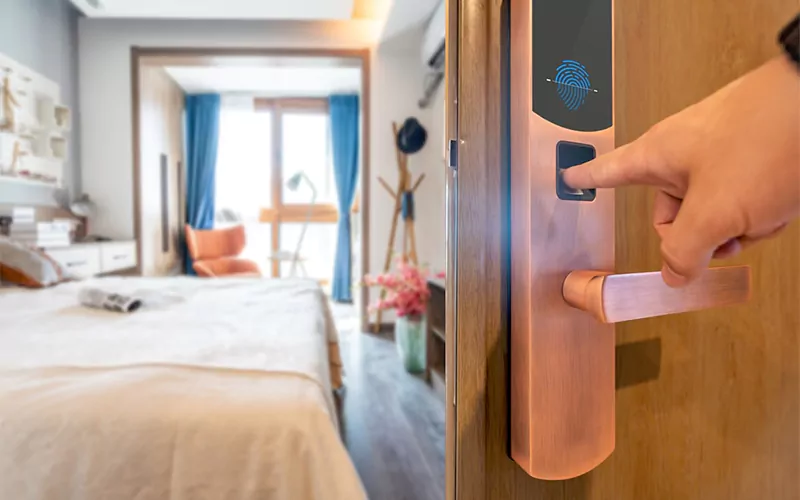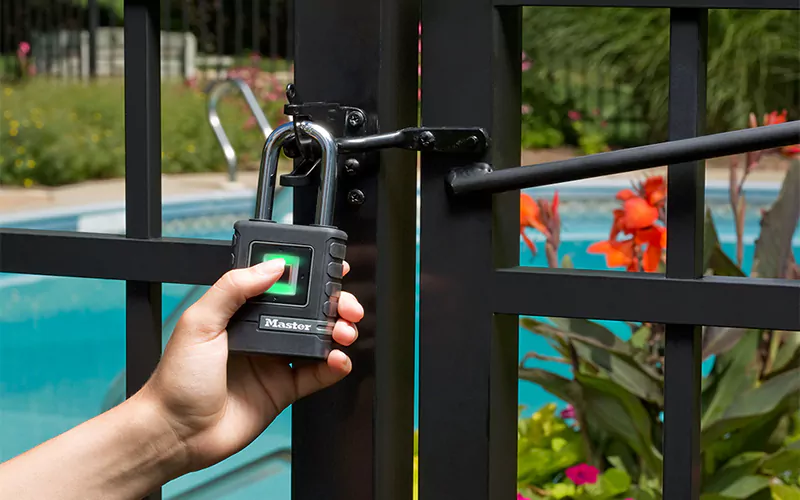Biometric Security Lock: A New Era of Protection
In today’s fast-paced world, security is paramount. As the world becomes increasingly interconnected, traditional security systems, such as mechanical locks and passwords, are no longer sufficient to protect valuable assets. The emergence of biometric security locks marks a significant evolution in access control technology. These advanced locks use unique physical characteristics, such as fingerprints, iris patterns, and facial features, to provide a higher level of security than traditional methods. In this article, we will explore how biometric locks work, their types, advantages, and applications.

What is a Biometric Security Lock?
A biometric security lock is an advanced type of lock that grants access to authorized individuals by using unique biological characteristics. Unlike traditional locks that rely on physical keys or passwords, biometric locks use features like fingerprints, iris patterns, facial recognition, or even voice recognition to identify individuals. This makes them more secure and harder to bypass. These locks are increasingly being adopted across various sectors, including residential, corporate, and government security, due to their enhanced protection and convenience.
Types of Biometric Security Locks
1. Fingerprint Recognition Locks
Fingerprint recognition locks are the most common form of biometric security locks. They work by scanning the unique patterns of an individual’s fingerprint and comparing them to a pre-registered database. If the fingerprint matches, the lock grants access. These locks are incredibly secure because each person’s fingerprint is unique, making it virtually impossible for someone to replicate or bypass the system. Fingerprint biometric locks are widely used in both residential and business settings due to their ease of use and high level of security.
2. Facial Recognition Locks
Facial recognition locks analyze the unique features of a person’s face, such as the distance between the eyes or the shape of the nose, to identify them. Using infrared sensors and high-definition cameras, these locks can scan a person’s face in real-time and grant access. This type of lock is particularly popular in high-security areas, such as airports, government buildings, and luxury homes. Some advanced facial recognition systems also work in low-light conditions, making them more reliable in various environments.
3. Iris Scanning Locks
Iris scanning locks are another form of biometric security lock that uses the unique patterns in the iris of the eye for identification. The iris is one of the most distinctive parts of the human body, and the patterns in the iris are incredibly difficult to replicate. Iris scanning is considered one of the most secure forms of biometric authentication and is used in high-security areas like military facilities and government buildings.
4. Voice Recognition Locks
Voice recognition locks use the unique characteristics of a person’s voice to grant access. These systems analyze the tone, pitch, and cadence of a person’s voice to authenticate them. Voice recognition locks are often used in situations where hands-free operation is needed, such as in smart home systems or car security systems. However, they may be less secure than other biometric systems due to potential vulnerabilities, such as voice mimicry or background noise interference.
5. Vein Pattern Recognition
Vein pattern recognition technology uses the unique patterns of veins in an individual’s hand or finger to authenticate their identity. This type of lock uses infrared light to scan the blood vessels and create a digital map. Since vein patterns are unique to each person and are difficult to replicate, this technology offers a high level of security. It is commonly used in environments where high security is required, such as hospitals or research labs.

How Does a Biometric Security Lock Work?
Biometric locks work by capturing a unique biological feature of the user, converting it into a digital template, and comparing it to the stored data in the system’s database. If the captured feature matches the stored data, the system grants access by unlocking the door or device. Here’s a breakdown of how it works:
- Capture: The lock scans the user’s biometric feature, such as a fingerprint, face, or iris.
- Data Conversion: The captured feature is converted into a digital template that can be compared to the stored data.
- Matching: The system compares the digital template to the stored data in its database.
- Access: If there’s a match, the lock grants access by unlocking.
Advantages of Biometric Security Locks
Biometric locks offer several advantages over traditional key-based locks. These include:
1. Enhanced Security
Biometric locks provide higher security than traditional locks because they rely on unique biological features that are nearly impossible to replicate. Unlike keys or passwords, which can be lost, stolen, or forgotten, biometric traits such as fingerprints and facial recognition cannot be easily copied. This makes biometric locks a more secure option for protecting valuable assets and sensitive areas.
2. Convenience
With biometric locks, there is no need to carry physical keys or remember complex passwords. The user simply needs to provide a biometric sample, such as a fingerprint or face scan, to gain access. This makes biometric systems incredibly convenient and time-efficient, especially in high-traffic environments like office buildings or airports.
3. Non-transferable
Since biometric characteristics are unique to each individual, they cannot be transferred or shared. This ensures that only authorized individuals can access the secured area or device, providing an additional layer of security that traditional locks cannot offer.
4. Audit Trails
Biometric systems often come with logging capabilities, allowing users to track when and who accessed a secured area. This is particularly useful in business or high-security environments where monitoring and auditing access is critical. Audit trails help enhance accountability and can act as a deterrent against unauthorized access.
Disadvantages of Biometric Security Locks
Despite their many advantages, biometric locks have some disadvantages:
1. High Initial Cost
Biometric locks are typically more expensive than traditional locks due to the advanced technology involved. The installation and maintenance costs can also be higher. However, the added security and convenience often make the investment worthwhile in the long run.
2. Privacy Concerns
Storing biometric data raises concerns about privacy and data security. If not properly protected, biometric information could potentially be accessed or misused. It is essential to ensure that biometric data is encrypted and stored securely to mitigate these risks.
3. Reliability Issues
Biometric systems are not always foolproof. Issues like dirty fingers, low lighting, or even aging can cause the system to fail to recognize an individual’s biometric feature. This can be frustrating for users and may require backup authentication methods like PIN codes or RFID cards.
4. Vulnerability to Spoofing
Although rare, biometric systems can be vulnerable to spoofing, where criminals use fake biometric samples, such as a replica fingerprint, to gain unauthorized access. However, advances in technology have made it increasingly difficult to spoof biometric features.
FAQs
1. Are biometric locks more secure than traditional locks?
Yes, biometric locks are generally more secure than traditional locks because they rely on unique physical characteristics that are difficult to replicate. Unlike traditional locks that can be picked or copied, biometric locks use features like fingerprints or iris patterns, which are far harder to duplicate.
2. Can biometric locks be hacked?
While it is possible for hackers to spoof some biometric features, modern biometric systems have advanced security measures in place, such as encryption and anti-spoofing technology, which make it extremely difficult to bypass these systems.
3. Do biometric locks work in all environments?
Biometric locks may have trouble functioning in extreme conditions, such as high humidity or very low temperatures. It's important to choose a lock that is designed to work in the specific environment where it will be installed.
4. Can biometric locks be used with smart home systems?
Yes, many biometric locks can be integrated with smart home systems. This allows users to control access remotely and combine biometric security with other smart devices like lighting and alarms.
5. How much do biometric security locks cost?
The cost of biometric locks varies depending on the technology used and the complexity of the system. Generally, biometric locks are more expensive than traditional key-based locks, but their added security and convenience make them a valuable investment.
Try Vanma Electronic Lock
You can contact us to request samples, and to experience the convenience of Vanma electronic locks.
Contact Us Now
